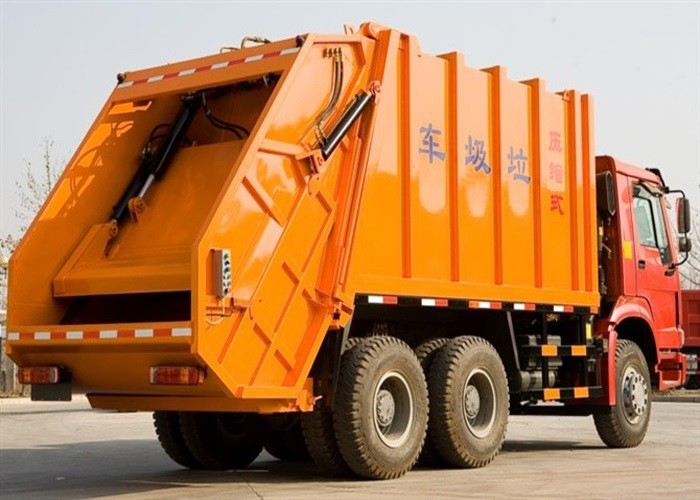Garbage trucks play a crucial role in waste management, serving as essential vehicles in keeping our cities clean. But have you ever wondered how large these vehicles actually are? Understanding garbage truck dimensions in feet can help both waste management professionals and the general public make informed decisions about waste collection, road planning, and more. In this article, we will explore the various dimensions of garbage trucks, their classifications, and dimensions based on types, along with practical examples, tips, and a frequently asked questions section to provide a well-rounded understanding.
The Basics of Garbage Truck Dimensions
What Are Garbage Truck Dimensions?
Garbage truck dimensions refer to the physical size measurements of these vehicles. Dimensions can include length, width, height, and turning radius. Understanding these parameters is essential for various stakeholders, including municipal agencies, fleet managers, and the general public.
Why Are Dimensions Important?
Knowing garbage truck dimensions can help with:
- City planning
- Waste management efficiency
- Road design and maintenance
- Safety protocols for operators
Common Dimensions of Garbage Trucks
Length
The length of a garbage truck typically ranges between 20 to 30 feet, depending on the type. For example:
- Rear-loader garbage trucks are usually around 24 to 26 feet long.
- Front-loaders can vary from 22 to 28 feet.
- Side-loaders generally fall between 23 to 27 feet.
Width
Width can significantly affect how garbage trucks navigate urban areas. Most garbage trucks are about 8 to 10 feet wide, which is essential information for city planners and residents alike.
Height
The height of garbage trucks generally ranges from 9 to 12 feet. This measurement is particularly relevant for assessing clearance under bridges and power lines.
Turning Radius
The turning radius of a garbage truck is crucial for maneuverability in tight urban environments. A standard garbage truck often has a turning radius of approximately 20 to 25 feet.
Types of Garbage Trucks and Their Dimensions
Rear-Loader Garbage Trucks
Rear-loader garbage trucks are commonly used for residential waste collection. They are designed to load waste from the back and typically measure:
| Dimension | Measurement (feet) |
|---|---|
| Length | 24-26 |
| Width | 8-10 |
| Height | 10-12 |
Front-Loader Garbage Trucks
Front-loader garbage trucks are typically used for commercial waste collection, particularly in business districts. Their dimensions include:
| Dimension | Measurement (feet) |
|---|---|
| Length | 22-28 |
| Width | 8-10 |
| Height | 10-11 |
Side-Loader Garbage Trucks
Side-loader garbage trucks are known for their efficiency and are often used in residential applications. Here are their dimensions:
| Dimension | Measurement (feet) |
|---|---|
| Length | 23-27 |
| Width | 8-10 |
| Height | 10-12 |
Compaction Trucks
Compaction trucks can take on various waste types and are efficient in reducing volume. Their dimensions are fairly standard:
| Dimension | Measurement (feet) |
|---|---|
| Length | 25-30 |
| Width | 8-10 |
| Height | 10-12 |
Factors Influencing Garbage Truck Sizes
Local Regulations
Local regulations can dictate the size of garbage trucks. Smaller trucks may be preferred in urban areas with narrow streets, while larger ones may be suitable in suburban neighborhoods.
Waste Volume and Type
The type and volume of waste being collected also influence truck sizes. Heavy-duty trucks are essential for construction sites, while compact trucks are ideal for residential collections.
Environmental Considerations
In light of environmental concerns, some cities are adopting smaller, more fuel-efficient trucks to reduce carbon footprints and improve air quality.
Practical Examples of Garbage Truck Use
Residential Areas
In residential neighborhoods, side-loaders and rear-loaders are often used due to their maneuverability and efficiency. For instance, a side-loader may pick up curb-side trash bins, requiring a width that fits comfortably on suburban streets.
Commercial Areas
In commercial districts, front-loaders are often the vehicle of choice, as they can service dumpsters placed against buildings. A front-loader’s compact design allows for access in tight spaces, providing flexibility in waste collection.
Best Practices for Using Garbage Trucks
Training Operators
Proper training for garbage truck operators is crucial. This involves understanding dimensions and handling protocols to ensure safety both for the operator and the public.
Regular Maintenance
Regular maintenance checks should be performed to ensure optimal performance and compliance with local regulations. Dimensions can change slightly with equipment loads, necessitating constant awareness.
Future Trends in Garbage Truck Design
Electric Garbage Trucks
Electric garbage trucks are emerging as the future of waste management, providing a greener alternative to traditional diesel vehicles. These trucks will likely have similar dimension profiles but offer lower operational costs.
Smart Technology Integration
Many new garbage trucks are incorporating smart technologies, such as GPS for route optimization and sensors for fill levels in bins. These advancements may change how cities approach waste management logistics and vehicle dimensions in the future.
Frequently Asked Questions (FAQs)
1. What is the average height of a garbage truck?
The average height of a garbage truck typically ranges from 9 to 12 feet, depending on the type of truck.
2. How long is a typical garbage truck?
Most garbage trucks measure between 20 to 30 feet in length, varying by truck type.
3. Can garbage trucks fit in low-clearance areas?
Garbage trucks are often challenging to fit in low-clearance areas due to their height of 9-12 feet. Planning routes and pickups accordingly is vital.
4. What are the environmental benefits of smaller garbage trucks?
Smaller garbage trucks tend to be more fuel-efficient, allowing cities to lower emissions and minimize their environmental impact.
5. How does a truck’s turning radius affect waste collection?
A smaller turning radius helps garbage trucks navigate tight corners and narrow streets, allowing efficient waste collection in urban settings.
6. What types of waste are collected by front-loader trucks?
Front-loader trucks primarily collect waste from commercial locations, where dumpsters are more common, as they can efficiently load large loads without much hassle.





